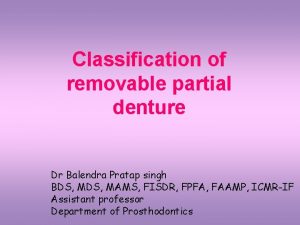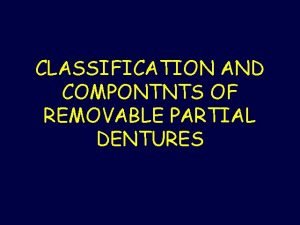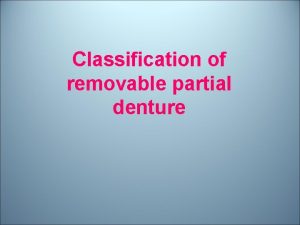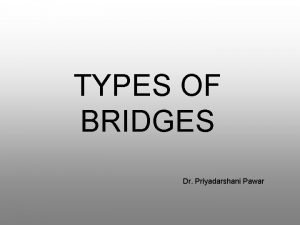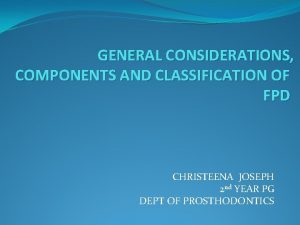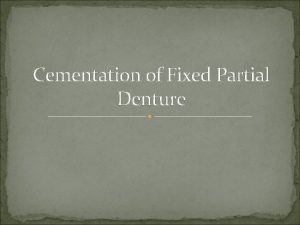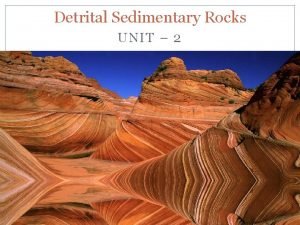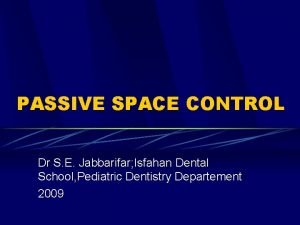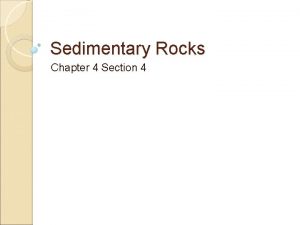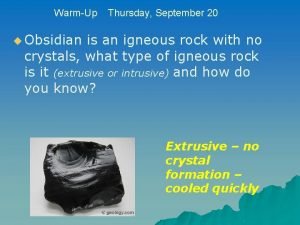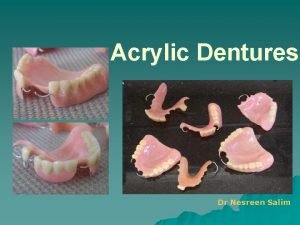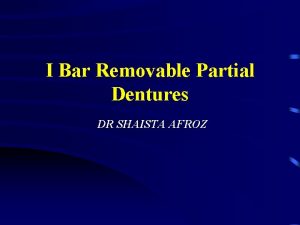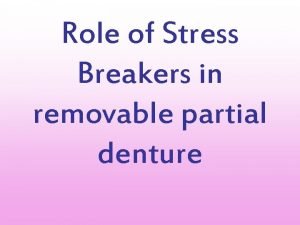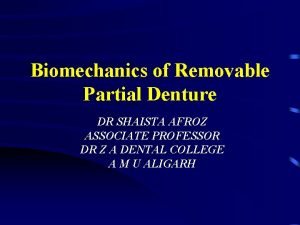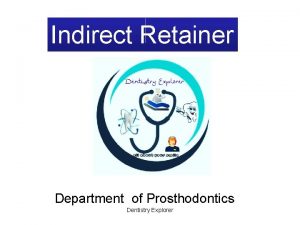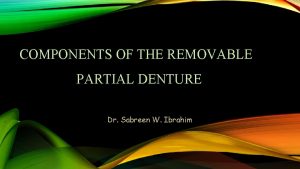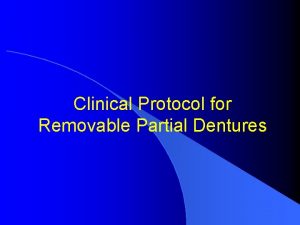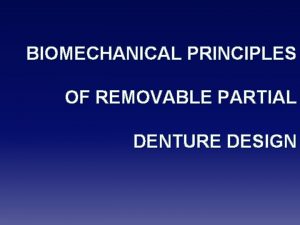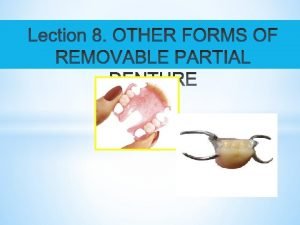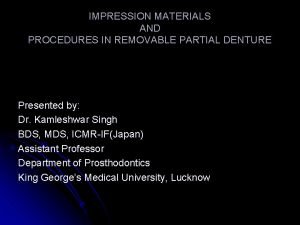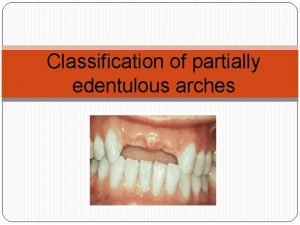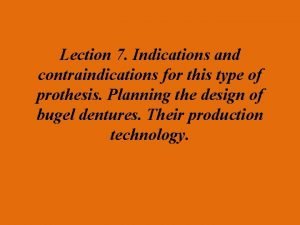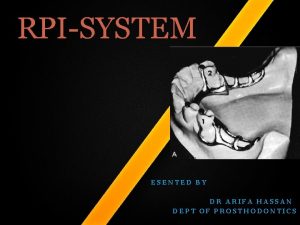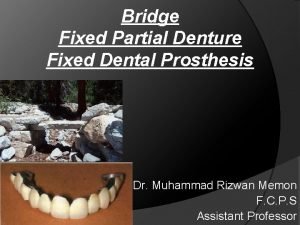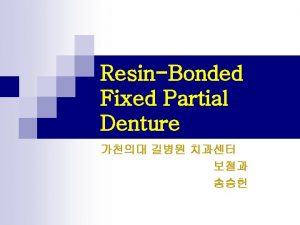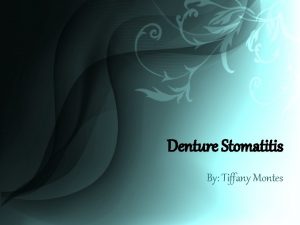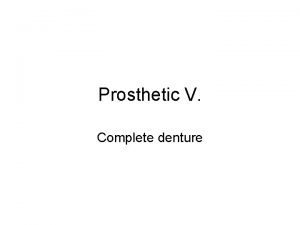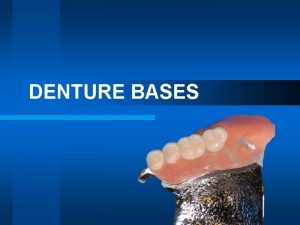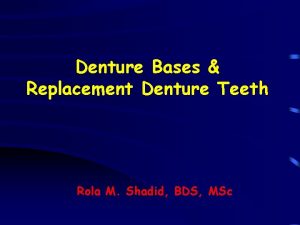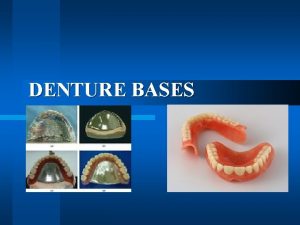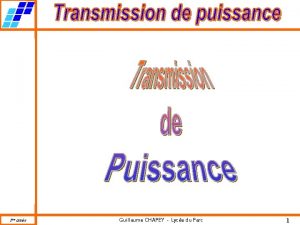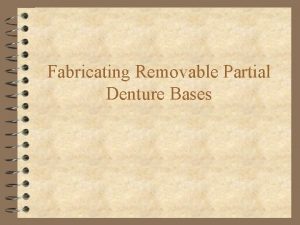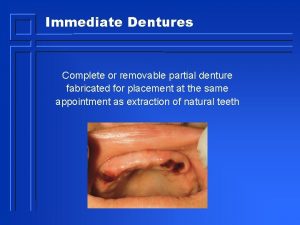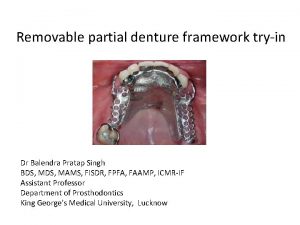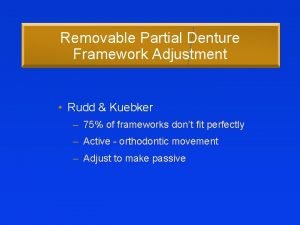Cementation of Fixed Partial Denture The clinical success



























- Slides: 27

Cementation of Fixed Partial Denture

The clinical success of fixed prostheses is heavily dependent on the cementation procedure. Loss of crown retention was found to be the second leading cause of failure of traditional crowns and fixed partial dentures. Although the establishment of- optimal resistance and retention forms in the tooth preparation are of primary importance, a dental cement must be used to act as a barrier against microbial leakage, sealing the interface between the tooth and the restoration and holding them together through some form of surface attachment.

CEMENT: A binding element or agent used as a substance to make objects adhere to each other or something serving to firmly unite OR A material that on hardening will fill a space or bind adjacent objects. Cementation: The process of attaching parts by means of cement. Luting agent: Any material used to attach or cement indirect restorations to prepared teeth.

IDEAL LUTING MATERIALS SHOULD: 1. Be biocompatible with the tissues that it contacts i. e. tooth and periodontal tissues. 2. Adhere to tooth substance and restoration; either chemically, mechanically or both. 3. Prevent leakage by good marginal seal. 4. Have sufficient mechanical properties to resist the forces transmitted to the lute through the restoration. This should include high tensile and compressive strengths, high fracture toughness and fatigue strength, and a modulus of elasticity which is appropriate for stress absorption.

5. Be cariostatic 6. Be insoluble in the dilute organic acids found in plaque- which may collect at the gingival margins of poorly contoured/poorly fitting indirect restorations or in patients with suboptimal oral hygiene. 7. Resist water sorption. 8. Be available in a sufficient range of shades if the luting material contributes to the overall shade of the restoration. 9. Achieve optimal physical properties as quickly as possible. 10. Allow easy removal of excess and clean-up. 11. Have sufficiently low film thickness so that the restoration may seat fully.

Luting materials play an important role in indirect dentistry by aiding the retention of restorations and in the prevention of leakage at the margins. These may be classified according; 1. To the material from which they are formed; and 2. More generally as Active and Passive.

Active luting materials by being bonded to both the tooth and restoration, make the restoration and tooth synergistic, and thereby play a role in the retention of the restoration, as well as sealing its margins and filling the space between the restoration and the tooth; while… Passive luting materials merely fill the gap between the indirect restoration and the tooth, with no chemical adhesion at the restoration/lute and/or tooth/lute interfaces. ‘Active luting materials therefore can be used in restorations in which there is limited retention. ’

Mechanism of retention: 1. Non-adhesive (mechanical) luting: - Latin (lutum = mud) , luting agent primarily served to fill the gap and prevent the entrance of fluids. Eg. Zinc phosphate cement: holds the restoration in place by engaging small irregularities on the surface of both the tooth and the restoration. 2. Micromechanical bonding: - eg. Resin cements when used on pitted surfaces can provide effective micromechanical bonding -deep irregularities are produced on the surface of enamel, ceramic or metal….

3. Molecular adhesion: -involves physical forces (bipolar, Van der Waals and chemical bonds (ionic, covalent) between the molecules of two different substances. Eg. Glass ionomer cements , zinc polycarboxylate cements.

Procedure for cementation of prosthesis: to be effective cement must be fluid and be able to flow into continuous film of 25 mm thick or less without fragmentation. The procedure consists of placing the cements on the internal surface of the prosthesis and extending slightly over the margin, seating it on the preparation, and removing the excess cement at an appropriate time. Cementation of a single crown as an example is described with (Fig 5 a). Placement of cement: The cement paste should coat the entire inner surface of the crown and extend slightly beyond the margin. It should fill about half of the interior crown volume

Seating: Variables that facilitate seating include using a cement of lower viscosity, increasing the taper, and decreasing the height of the crown preparation and creating vibration by tapping on the prosthesis as the pressure is applied Moderate finger pressure to displace the cement and seat the crown on the prepared tooth is used. An alternatively method is to use a vibrational instrument to facilitate the seating of the prosthesis without creating excess pressure and also introducing escape vents on the occlusal aspect of the prosthesis has been advocated.

After the marginal gap area is evaluated for closure with an explorer the patient may be asked to complete the seating by biting on a soft piece of cotton which is static method. During this stage, the last increment of excess cement is expelled through the space between the prosthesis and the tooth as the prosthesis reaches its final position on the preparation. Evaluate the marginal gap area and the occlusion to confirm the seating of the crown.

Removal of Excess cement: The excess cement accumulates around the marginal area at the completion of seating. Its removal depends on the properties of the cement used. If the cement sets to a brittle state and does not adhere to the surrounding surfaces, the tooth and the prosthesis, it is best removed after it sets. This applies to zinc phosphate, silicophasphate, and Zo. E cements. For glass ionomer cements, polycarboxylate cements and resin based cements that are potentially capable of adhering both chemically and physically to the surrounding surfaces the protocol of excess cement removal varies.

One can coat the surrounding surface with a separating medium such as petroleum jelly, thereby inhibiting the materials adherence to the surfaces, and remove the excess after the cement sets. Another technique involves the removal of excess cement as soon as the seating is completed, thus preventing the material from adhering to the adjacent surfaces.

CEMENTATION PROCEDURES: Passive luting materials: 1. Cementation with zinc phosphate cement: -Oldest of currently available luting materials having been available, unchanged, for 100 years. -Main component of powder- zinc oxide. -Liquid contains aqueous solution of phosphoric acid (upto 60%) concentration.

CEMENTATION WITH ZINC PHOSPHATE: Isolation: The field must be kept dry during the final placement of the restoration and hardening of the cement. The quadrant containing the tooth being restored is isolated with cotton rolls and a suction device such as a saliva ejector for the maxillary arch and a svedopter for the mandibular arch.

Protection: If the tooth is vital it is customarily protected from the acidity of the cement. It has been reported that nearly 18% of teeth restored with cores and full crowns later experienced pulpal necrosis. More often than not, a tooth receiving a crown has already been subjected to multiple insults from caries and previous restorations, in addition to the crown preparation and impression procedures. Possible trauma from zinc phosphate cement should be minimized.

Partial protection of the pulp can be provided by the application of two thin layers of cavity varnish. It is applied to the dry tooth with cotton pellets and lightly blown dry after each application. This partially seals the dentinal tubules and protects the pulp from the phosphoric acid. The fact that the cement is irritating the pulp is evidenced by the pain an unanesthetized patient sometimes experiences when a crown is cemented over a vital, unvarnished tooth. Because varnish does reduce the retention of a crown, it should not be used on non-vital teeth or with other types of cements. A bonding agent can also be used for this purpose.

Procedure: 1. Mixing: Place powder on one end of a glass slab that has been cooled in tap water and wiped dry. At the center of the slab, measure out approximately six drops of liquid for each unit to be cemented. The composition of the liquid may be altered by prolonged exposure to air. Both the loss and gain of water adversely affect the properties. Use a spatula to divide the powder into small increments approximately 3 mm on a side. Move one increment across the slab and incorporate it into the liquid, mixing it for 20 seconds across a wide area. This will aid in neutralizing the acid and retarding the setting time.

Continue to add small increments of powder, mixing each for 10 to 20 seconds using a circular motion and covering a wide surface area of the slab. During mixing zinc phosphate liberates heat that can unduly accelerate its setting. Therefore, it must be mixed slowly on a wide surface area on a cool glass slab to insure that a maximum amount can be incorporated into a mix that is still workable. On the other hand, if the mixture becomes too thick, the restoration may be prevented from seating completely.

CEMENTATION WITH POLYCARBOXYLATE CEMENT: Isolation: Similar to zinc polycarboxylate. In addition, -Sandblast the inside of the casting to ensure maximum retention. -Coat the outside of the casting with petrolatum to prevent the cement from sticking where it is not needed.

CEMENTATION WITH GLASS IONOMER CEMENT: The glass ionomer luting cements were developed in 1978. These cements contain an ion-leachable fluoroalumino-silicate glass which reacts with a water soluble polymeric acid acqueous poly(alkenoic)acid. The outer layers of the glass particles are decomposed, leading to release of Ca, Al and F ions. The set cement is therefore a core of unreacted glass particles sheathed by a siliceous hydrogel bound together by the reaction products.

�-Procedure: � 1. Tooth preparation: �-Dry and clean the tooth. �-Do not apply varnish and do not etch the tooth. � 2. Mixing: �-Powder-liquid ratio is one scoop of powder for two drops of liquid. � -Shake the bottle and then place two level scoops of powder and four drops of liquid onto a glass slab. Mix the cement as quickly as possible. �-Mix rapidly over smaller surface area. Mix within 60 seconds and should have a creamy consistency. �-At first, a properly proportioned mixture will appear too thick, but as the particles dissolve it will become less viscous.

Post cementation: -Remove excess cement after it has completely set -Remove with a scaler, explorer and floss. -Protect against moisture-varnish, petrolatum. . before dismissing the patient.

RESIN MODIFIED GLASS IONOMER LUTING CEMENTS (RMGI): -Were developed in order to overcome some of the shortcomings of traditional glass ionomer cements, such as poor tensile strength. -In addition to the components of glass ionomer materials these materials also contain a monomer such as 2 -hydroxyethyl methacrylate HEMA or Bis. GMA. They do not contain any photoinitiator, so are not capable of light curing. -They set by typical acid-base reaction.

Advantages over conventional glass ionomer materials include: -Improved biocompatibility -Better fluoride release. -Improved adhesion to tooth. -Improved physical properties , particularly tensile strength In addition these cements go through a rubbery phase on setting which facilitates clean-up.

Thank u……. . Have a nice day and week ahead……….
 Craddock classification dentures
Craddock classification dentures Internal finish line in removable partial denture
Internal finish line in removable partial denture Applegate classification
Applegate classification Spring cantilever abutment
Spring cantilever abutment Acp classification of fpd
Acp classification of fpd Cementation in fpd
Cementation in fpd Detrital sedimentary rocks
Detrital sedimentary rocks Compaction and cementation
Compaction and cementation Rock cycle song
Rock cycle song Igneous rock to metamorphic rock
Igneous rock to metamorphic rock Band and loop indications
Band and loop indications Sedimentary rocks
Sedimentary rocks What is cementation
What is cementation Isolated abutment rpd design
Isolated abutment rpd design I-bar clasp
I-bar clasp Stress breaker in rpd images
Stress breaker in rpd images Biomechanics of removable partial denture
Biomechanics of removable partial denture Example of indirect retainer in rpd
Example of indirect retainer in rpd Non rigid connector indication
Non rigid connector indication Component parts of removable partial denture
Component parts of removable partial denture Single palatal bar major connector
Single palatal bar major connector Fgm
Fgm Lever principle in rpd
Lever principle in rpd Removable partial overdenture
Removable partial overdenture Anatomic form impression
Anatomic form impression Applegate modification
Applegate modification Indication & contraindications of rpd
Indication & contraindications of rpd Guiding plane proximal plate
Guiding plane proximal plate
